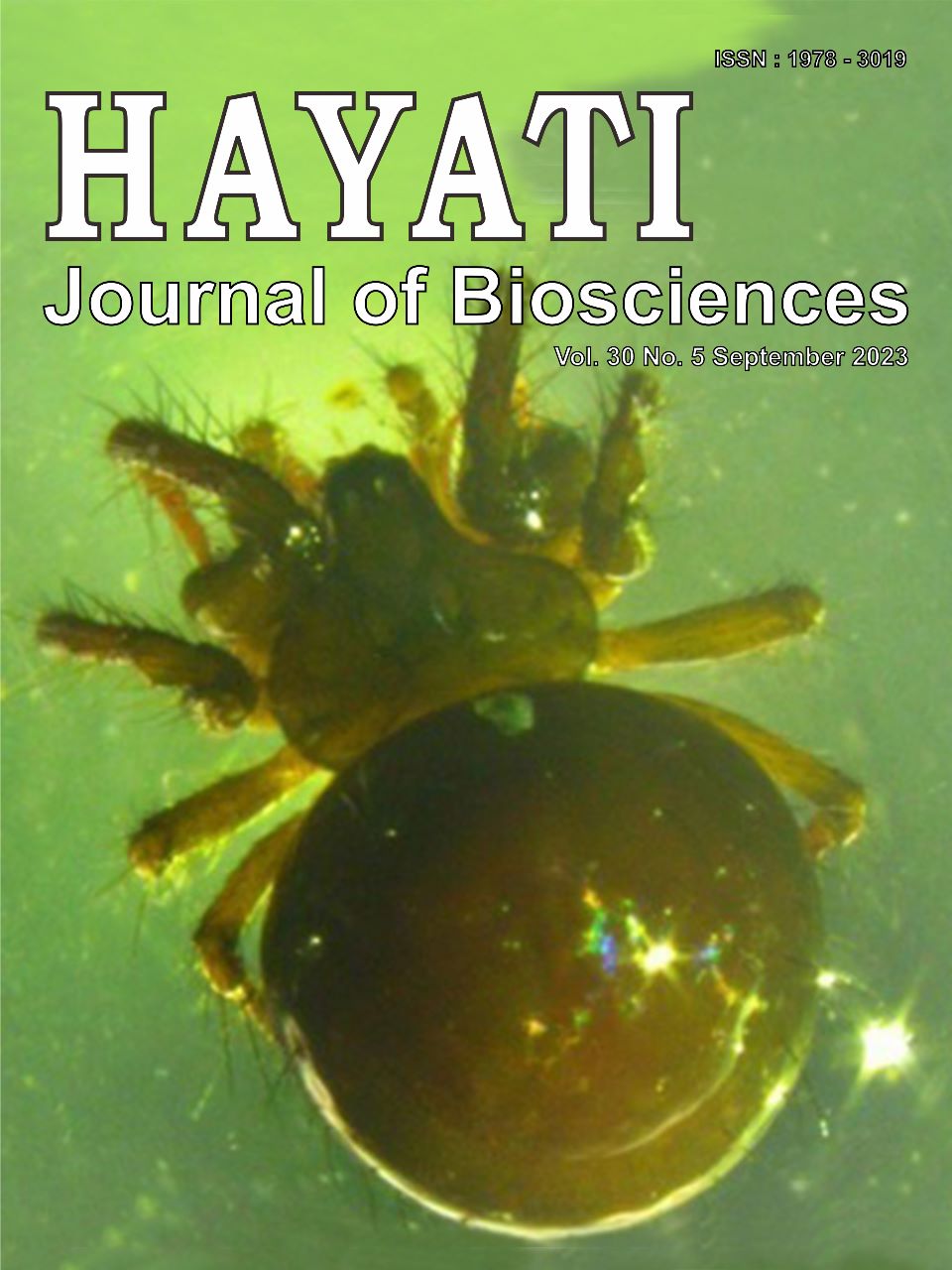Genetic Diversity of Gracilaria spp. in the Intertidal Zone on the South Coast of Yogyakarta, Indonesia Based on DNA Barcoding with rbcL Marker
DOI:
https://doi.org/10.4308/hjb.30.5.907-917Abstract
Gracilaria spp. is a commercial seaweed utilized in various food, pharmaceutical, and health industries. Due to the high plasticity of seaweed, morphological identification must be validated by molecular identification using DNA barcoding. This study aims to identify the genetic diversity of Gracilaria spp. based on DNA barcoding with an rbcL marker. Samples were collected from six beaches, i.e., Trenggole, Drini, Siung, Wediombo, Nguyahan, and Ngedan, from September-November 2021. The methods in this study were sampling, sample preservation, morphological and tissue observations, DNA extraction, PCR and electrophoresis, and data analysis. The results showed four species of seaweed based on the rbcL marker: Gracilaria sp., G. salicornia, G. edulis, and G. vieillardii. Based on 18 samples confirmed by phylogenetics, five different species were found, namely G. salicornia, G. edulis, G. vieillardii, Gracilaria sp. 1, and Gracilaria sp. 2 The last two species, i.e., Gracilaria sp. 1 and Gracilaria sp. 2, from the intertidal zone of the south coast of Yogyakarta may have never been reported to GenBank.
Downloads
Downloads
Published
Issue
Section
License
HAYATI J Biosci is an open access journal and the article's license is CC-BY-NC. This license lets others distribute, remix, tweak, and build upon author's work, as long as they credit the original creation. Authors retain copyright and grant the journal/publisher non exclusive publishing rights with the work simultaneously licensed under a https://creativecommons.org/






















.png) Bogor Agricultural University
Bogor Agricultural University Department of Biology
Department of Biology The Indonesian Biological Society
The Indonesian Biological Society 

